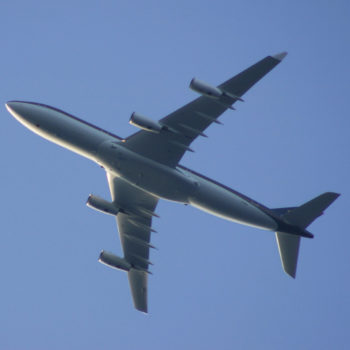For Supply Chains, the Direct Approach Works Best
by Sonja Kroll on 3rd Jun 2016 in News

Although successful and still growing, programmatic trading is outdated and overpriced. If it is to survive, the industry needs to up their game and update and optimise programmatic. In this piece, Andrew Eifler, VP product management, AppNexus Advertiser Technology Group (pictured below), takes a leaf out of the airline industry's book to show how it could be done.
For being a new technology, programmatic advertising has seen a remarkable rise to prominence. Magna Global predicts that programmatic buying will grow at an average rate of 31% annually over the next four years, reaching USD$36.8bn (£25.1bn) by 2019.
But, there’s also bad news. Compared with almost any other supply chain system on earth, the route between digital buyers with sellers is highly inefficient.
In a recent interview with AdAge, Lou Paskalis, SVP of enterprise media at Bank of America, offered this stark assessment: "Between ad-serving and tech-targeting fees, [we’re] now starting to see more than 50¢ out of every dollar going to nonworking investments and less going to the publisher." I can’t say that I’m very surprised.
As any LUMAscape can tell you, today’s ad-tech landscape resembles a patchwork of roughly 2,000 point solutions fighting to stay alive. With DSPs vying against SSPs for fractions of every ad-tech dollar, with the non-negotiable taxes taken by supposedly 'open' exchanges and networks, and the redundant inventory sold to buyers in multiple markets at different prices – it adds up to chaos.
 In contrast to programmatic, a study conducted by Bain Capital demonstrates the sophistication of supply chain systems in other, more-established industry verticals. Top-quartile supply chain management systems include those in Automotive, Computer Electronics, and Home Improvement, costing their companies as little as 4.2% annually.
In contrast to programmatic, a study conducted by Bain Capital demonstrates the sophistication of supply chain systems in other, more-established industry verticals. Top-quartile supply chain management systems include those in Automotive, Computer Electronics, and Home Improvement, costing their companies as little as 4.2% annually.
Programmatic trading is outdated and overpriced. The question is how do we update and optimise its pricing model?
One solution is to examine a particular industry that was once almost synonymous with being inefficient and overpriced, and see how it’s managed to reinvent itself into being cheaper and faster. Commercial air travel, I’m looking straight at you.
In the early years, a single international flight might require over a dozen layovers – much like a single programmatic transaction often now calls for half-a-dozen intermediaries. That’s inefficient. And, as recently as 1974, Federal regulations made it unlawful "for an airline to charge less than USD$1,442 (£985) in inflation-adjusted dollars for a flight between New York City and Los Angeles". Much like modern programmatic transactions, prices like those were beyond overpriced.
So, how did flying become attainable to nearly everyone? Why is it that the International Air Transport Association (IATA) predicts airfares will fall to near-record lows in 2016?
Why is it that today I can access a website, like kayak.com , click a button that filters my search to include only 'nonstop' flight options and only have to pay a few hundred dollars? And how can programmatic advertising learn to fix itself by following the example of a site like Kayak?
Here’s how: the only reason sites like Kayak even exist today are because the US government deregulated commercial air travel in 1978, encouraging open, transparent competition between different air carriers. According to The Atlantic, increased competition is the main reason airline ticket prices have plummeted by 50% over these past 30 years – and why I can easily book a cheap, nonstop flight from New York City to Los Angeles using Kayak. As John Heimlich, VP and chief economist at Airlines for America, puts it nicely: "It's the American way to want a product approaching first-class for a price approaching zero."
As with online airline services, so with online advertising. In the early era of programmatic advertising, algorithms optimised advertisers’ dollars for performance – meaning, a click or a conversation – regardless of how many pass-backs and daisy chain handoffs the transaction required. But, programmatic is entering a new, 'programmable' age, characterised by more frictionless supply chains, that let digital traders buy direct inventory from publishers whenever it’s available. Now algorithms will be optimised for price, eliminating redundant offers from competing platforms and transforming the ad-tech landscape like never before.
Using new programmable platforms that can transact between buyers and sellers, all spend can go directly to the publisher, through either the buyer’s tag or the publisher’s pre-bid integration – and without any intermediaries beyond the single, open, transparent platform itself. Making a trade between buy side and sell side becomes as easy as pressing the 'nonstop' button on Kayak. By using new programmable marketing technology, marketers can now transact directly: no layovers, or luxury taxes, included.








Follow ExchangeWire